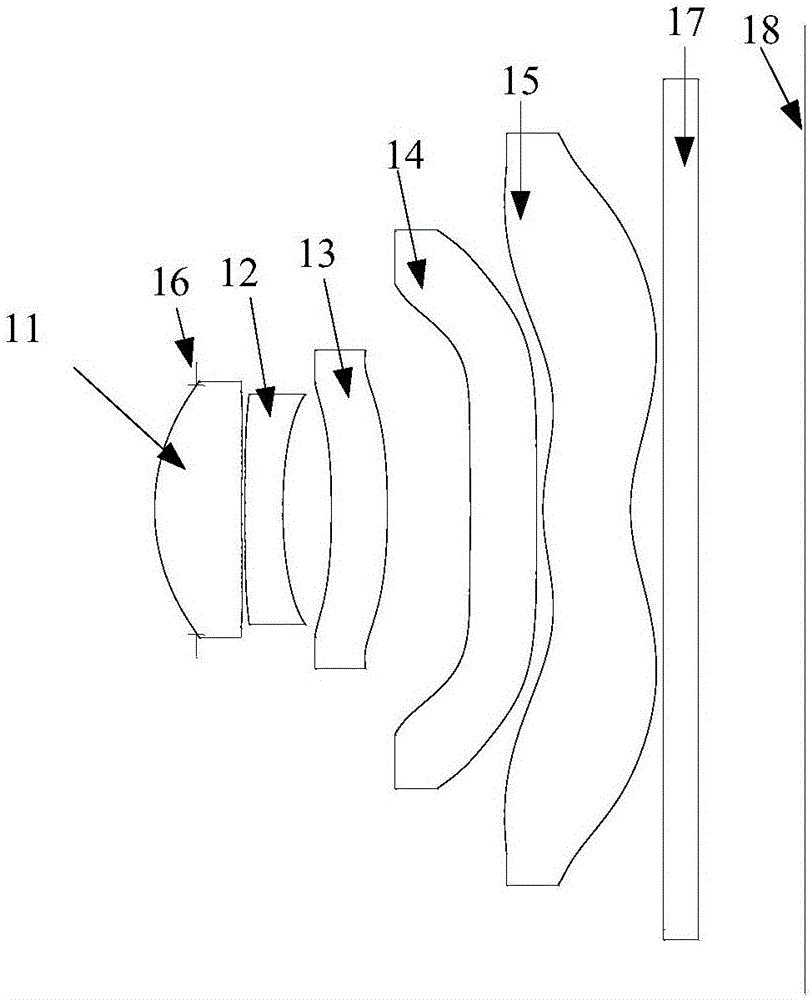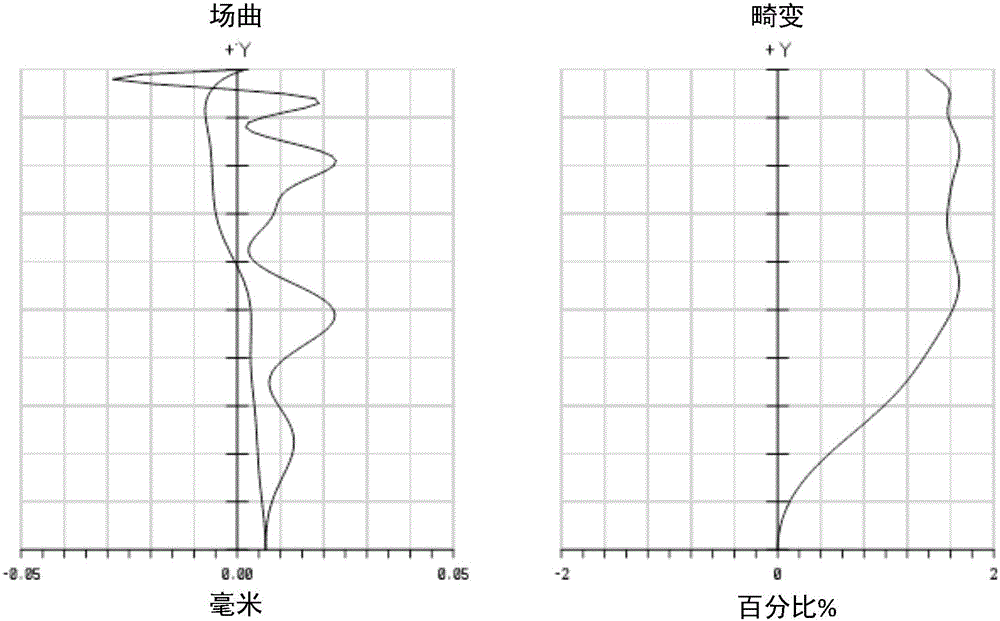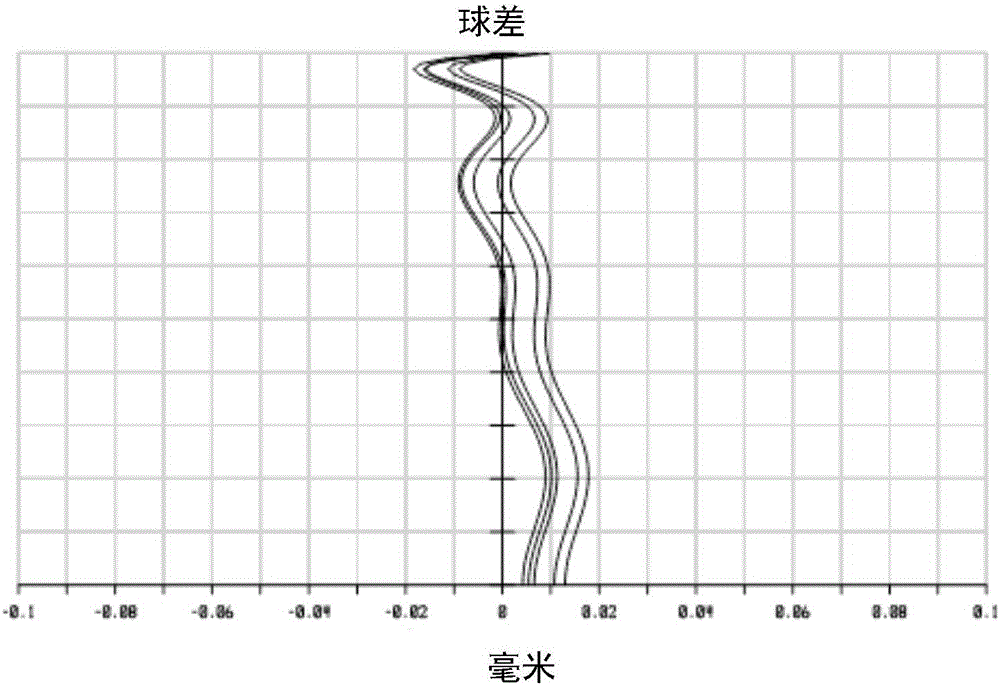Camera lens and electronic equipment
A camera lens and lens technology, applied in the field of camera lens, can solve the problems of increasing the height of the camera lens, unable to meet the requirements of light and thin personal electronic products, etc., and achieve the effect of reducing the total length and satisfying the miniaturization.
- Summary
- Abstract
- Description
- Claims
- Application Information
AI Technical Summary
Problems solved by technology
Method used
Image
Examples
Embodiment 1
[0083] In this embodiment, the structure of the imaging lens including the first lens 11 to the fifth lens 15, the aperture 16 and the filter 17 is as follows: figure 1 As shown, the field curvature and distortion curves are shown as figure 2 As shown, the spherical aberration curve is shown as image 3 shown.
[0084] Wherein, the specific parameters of the first lens 11 to the fifth lens 15, the aperture 16 and the optical filter 17 refer to Table 1-1, and the specific parameters of the aspheric surfaces of the first lens 11 to the fifth lens 15 are shown in Table 1-2 . In Table 1-1 and Table 1-2, Surface 2 represents the object-side surface of the first lens 11, Surface 3 represents the image-side surface of the first lens 11, Surface 4 represents the object-side surface of the second lens 12, and Surface 5 represents the object-side surface of the first lens 11. The image-side surface of the second lens 12, the object-side surface of the third lens 13 in surface 6, the...
Embodiment approach 2
[0106] In this embodiment, the structure of the imaging lens including the first lens 11 to the fifth lens 15, the aperture 16 and the filter 17 is as follows: Figure 4 As shown, the field curvature and distortion curves are shown as Figure 5 As shown, the spherical aberration curve is shown as Figure 6 shown. The specific parameters of the first lens 11 to the fifth lens 15 , the aperture 16 and the filter 17 refer to Table 2-1, and the specific parameters of the aspheric surfaces of the first lens 11 to the fifth lens 15 are shown in Table 2-2.
[0107] table 2-1
[0108]
[0109]
[0110] Table 2-2
[0111]
[0112] Specifically, in this embodiment, TTL / I mgh =1.34, satisfying 1.3mgh <1.5 relational formula;
[0113] |f / f 2 |=0.73, satisfying 0.72 |<0.8 relational expression;
[0114] |f / f 3 |+|f / f 4 |=0.71, satisfying 0.43 |+|f / f 4 |<0.75 relational expression;
[0115] R 10 / f=26.30, satisfying 3.210 The relational expression of / f<30;
[0116] (R...
Embodiment approach 3
[0128] In this embodiment, the structure of the imaging lens including the first lens 11 to the fifth lens 15, the aperture 16 and the filter 17 is as follows: Figure 7 As shown, the field curvature and distortion curves are shown as Figure 8 As shown, the spherical aberration curve is shown as Figure 9 shown. The specific parameters of the first lens 11 to the fifth lens 15 , the aperture 16 and the filter 17 refer to Table 3-1, and the specific parameters of the aspheric surfaces of the first lens 11 to the fifth lens 15 are shown in Table 3-2.
[0129] Table 3-1
[0130]
[0131] Table 3-2
[0132]
[0133]
[0134] Specifically, in this embodiment, TTL / I mgh =1.36, satisfying 1.3mgh <1.5 relational formula;
[0135] |f / f 2 |=0.74, satisfying 0.72 |<0.8 relational expression;
[0136] |f / f 3 |+|f / f 4 |=0.44, satisfying 0.43 |+|f / f 4 |<0.75 relational expression;
[0137] R 10 / f=13.65, satisfying 3.210 The relational expression of / f<30;
[0138] (R...
PUM
 Login to View More
Login to View More Abstract
Description
Claims
Application Information
 Login to View More
Login to View More - R&D
- Intellectual Property
- Life Sciences
- Materials
- Tech Scout
- Unparalleled Data Quality
- Higher Quality Content
- 60% Fewer Hallucinations
Browse by: Latest US Patents, China's latest patents, Technical Efficacy Thesaurus, Application Domain, Technology Topic, Popular Technical Reports.
© 2025 PatSnap. All rights reserved.Legal|Privacy policy|Modern Slavery Act Transparency Statement|Sitemap|About US| Contact US: help@patsnap.com



